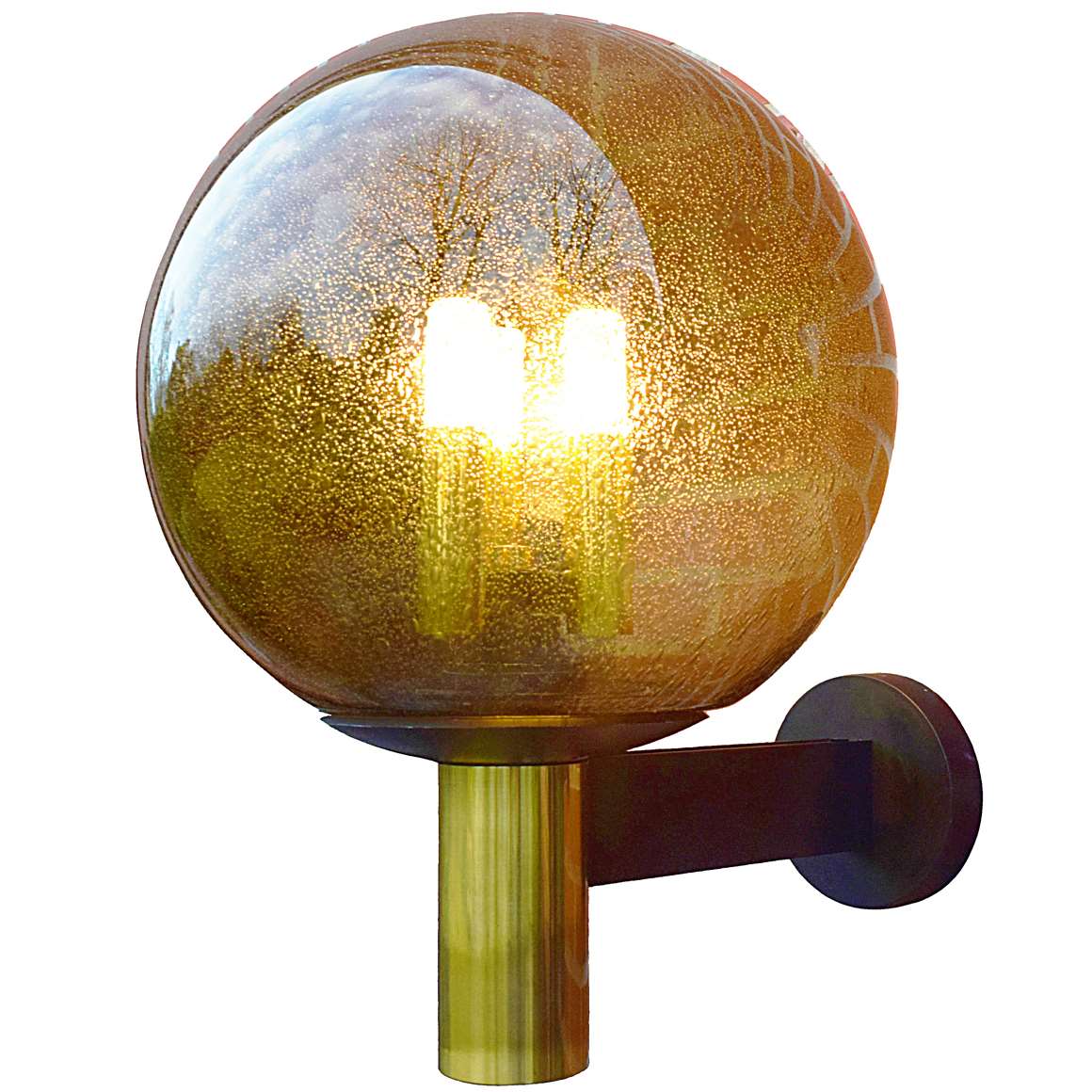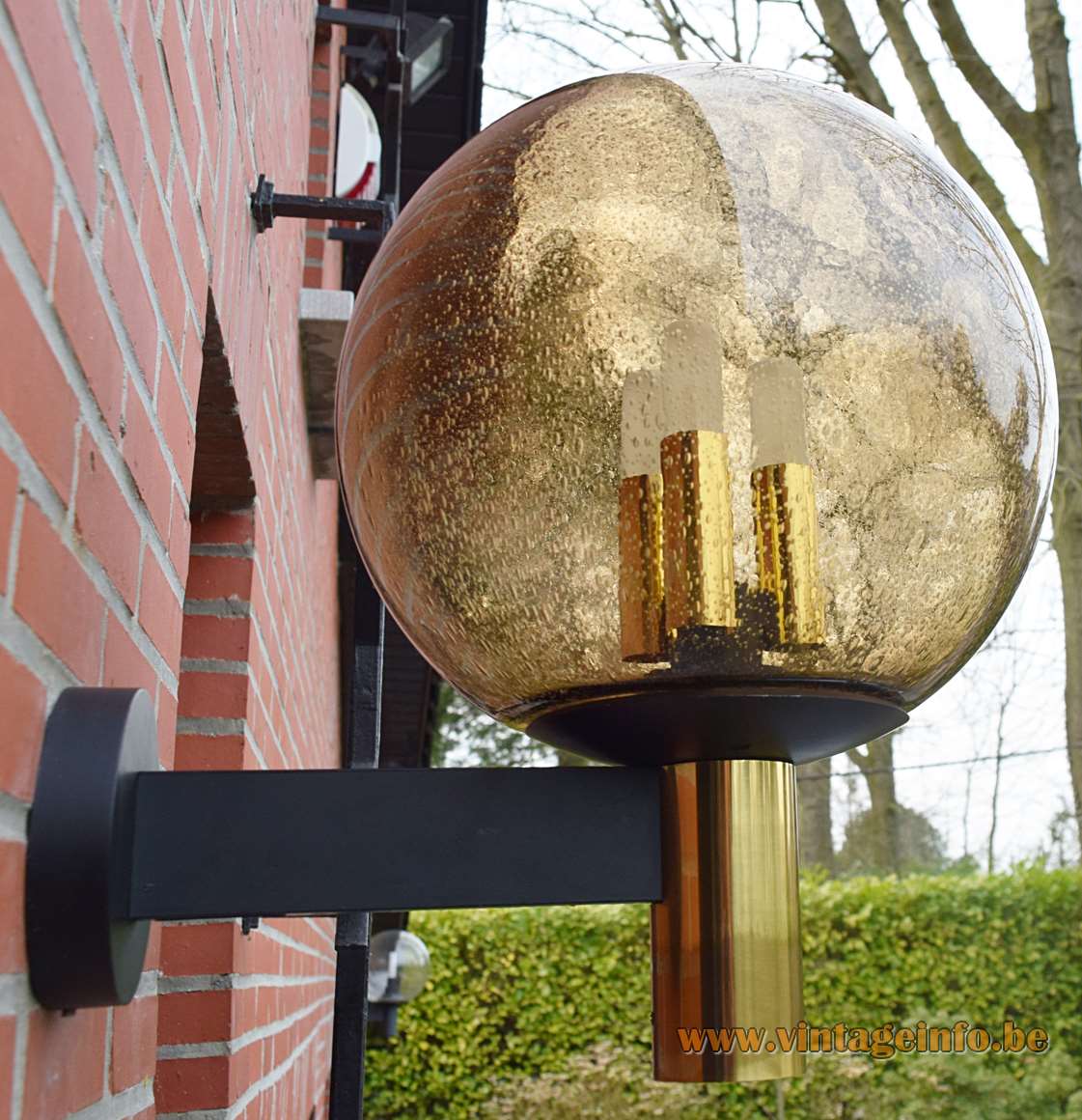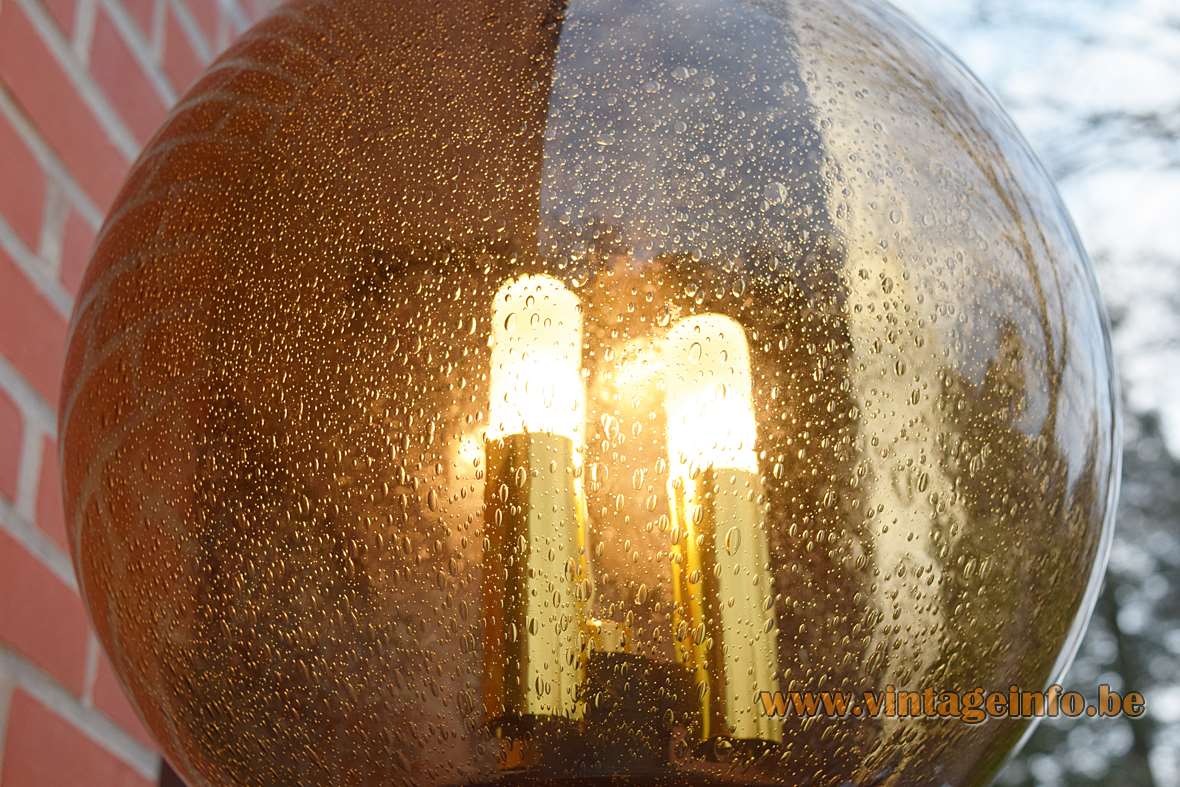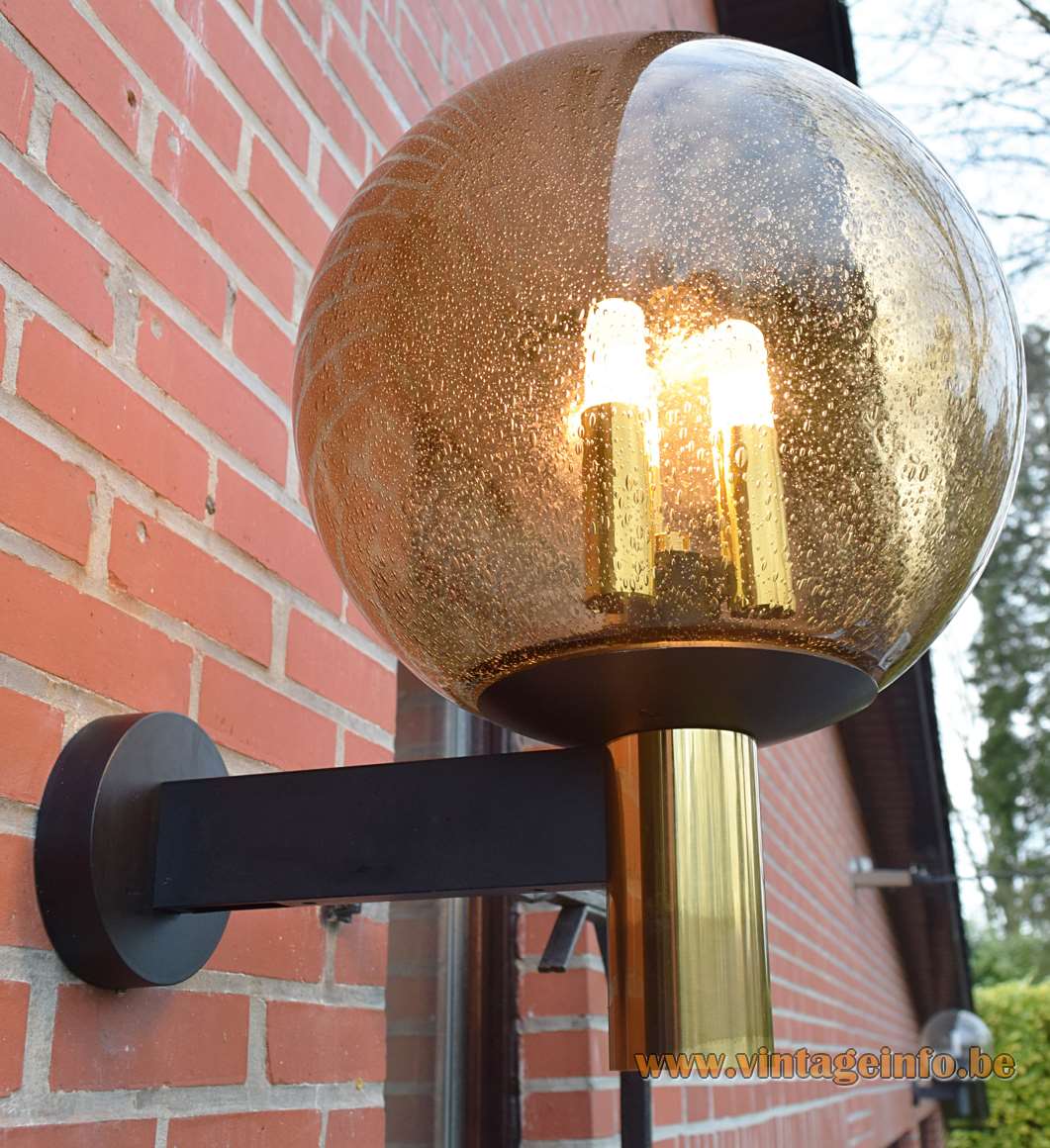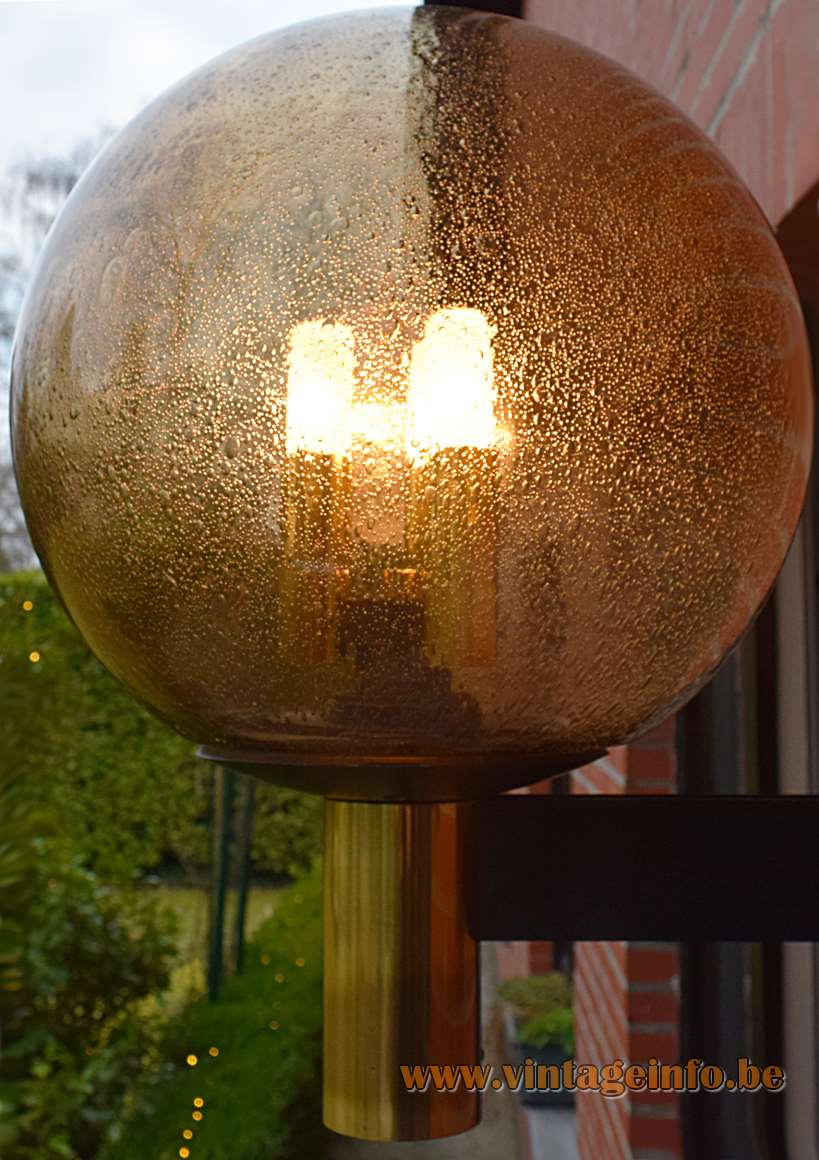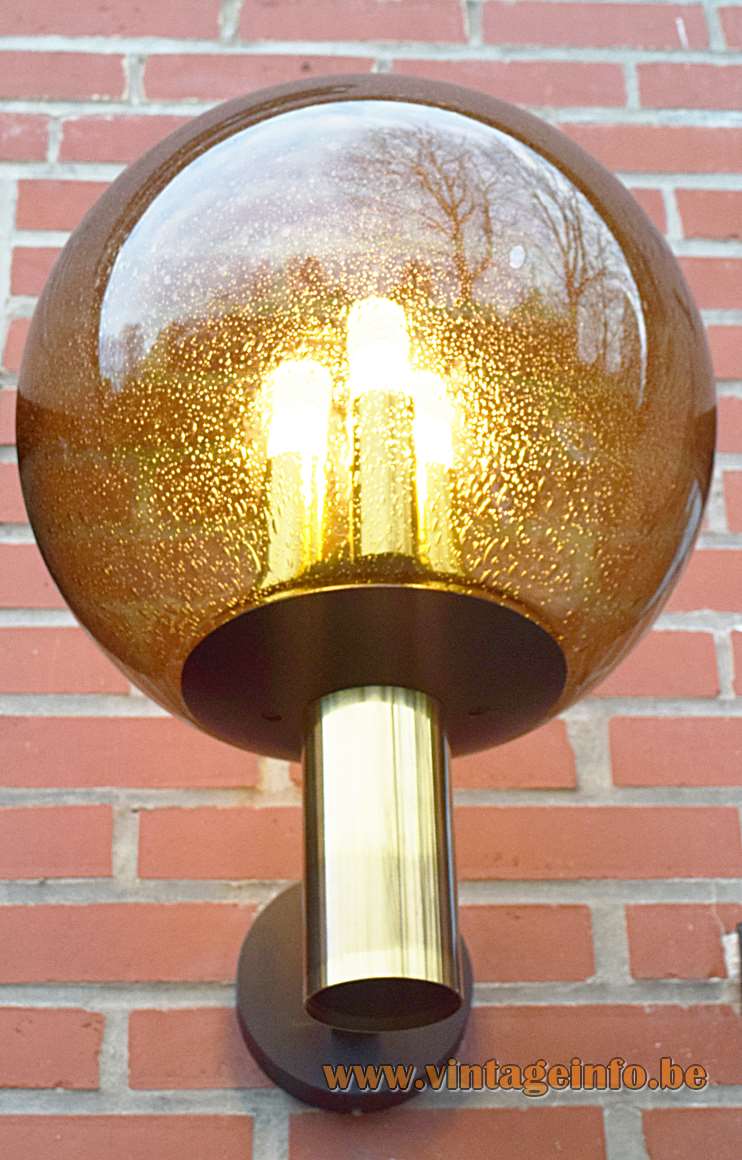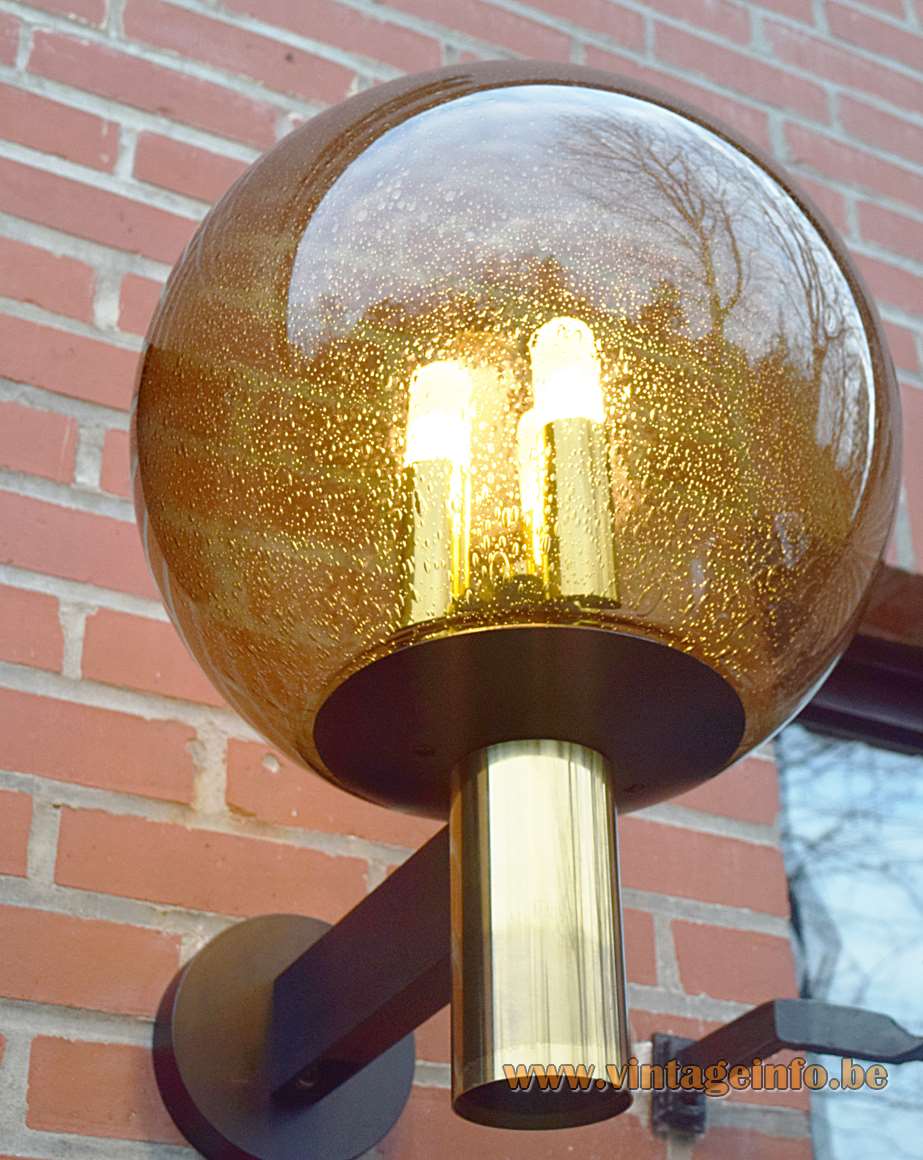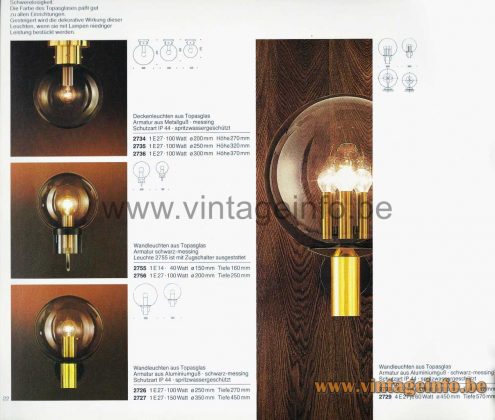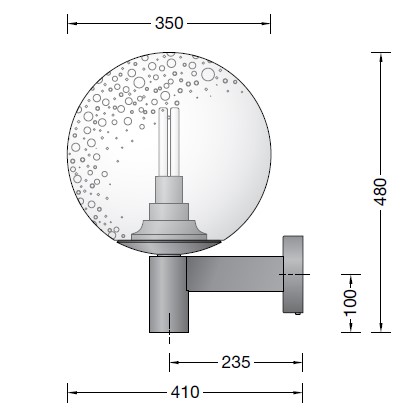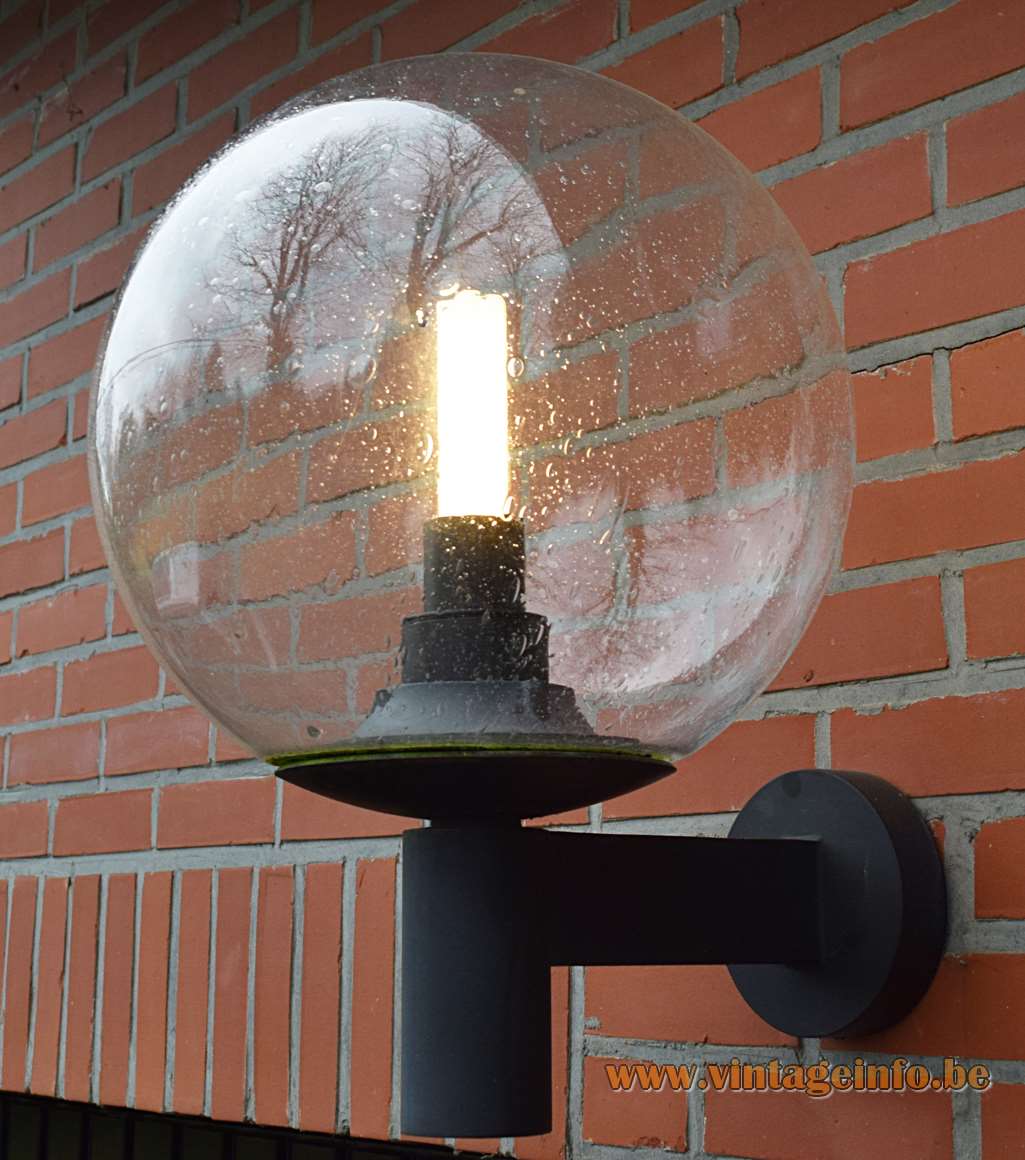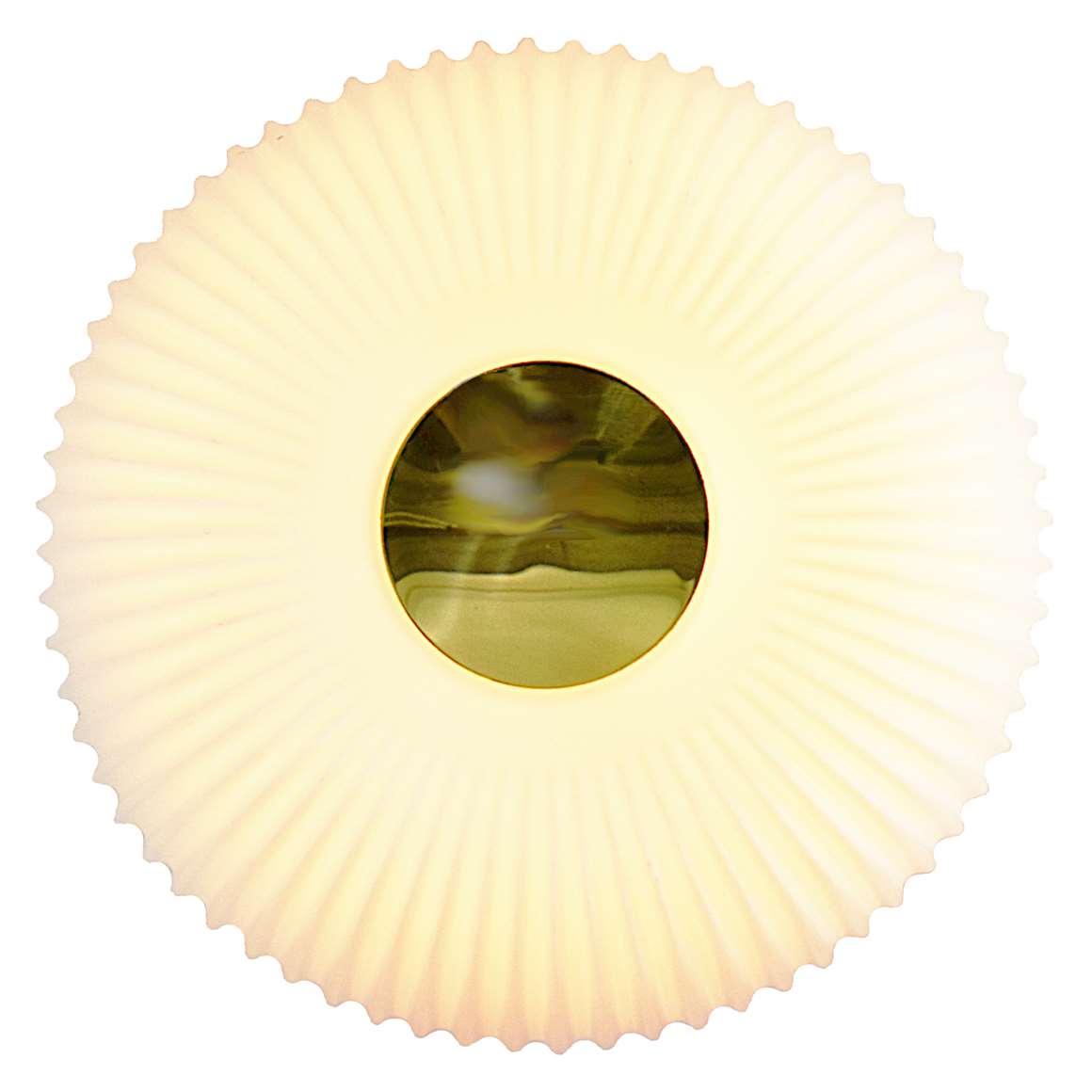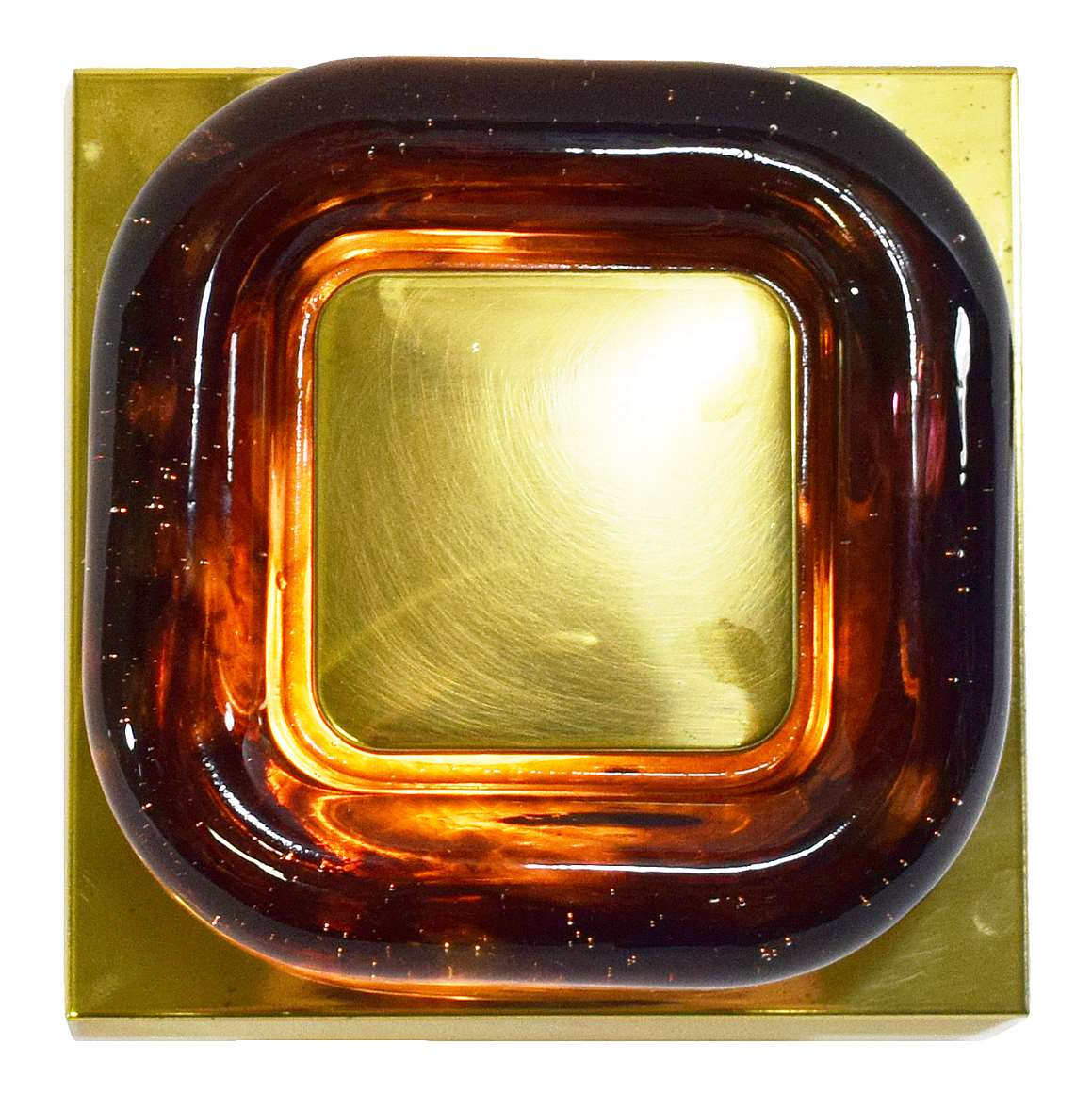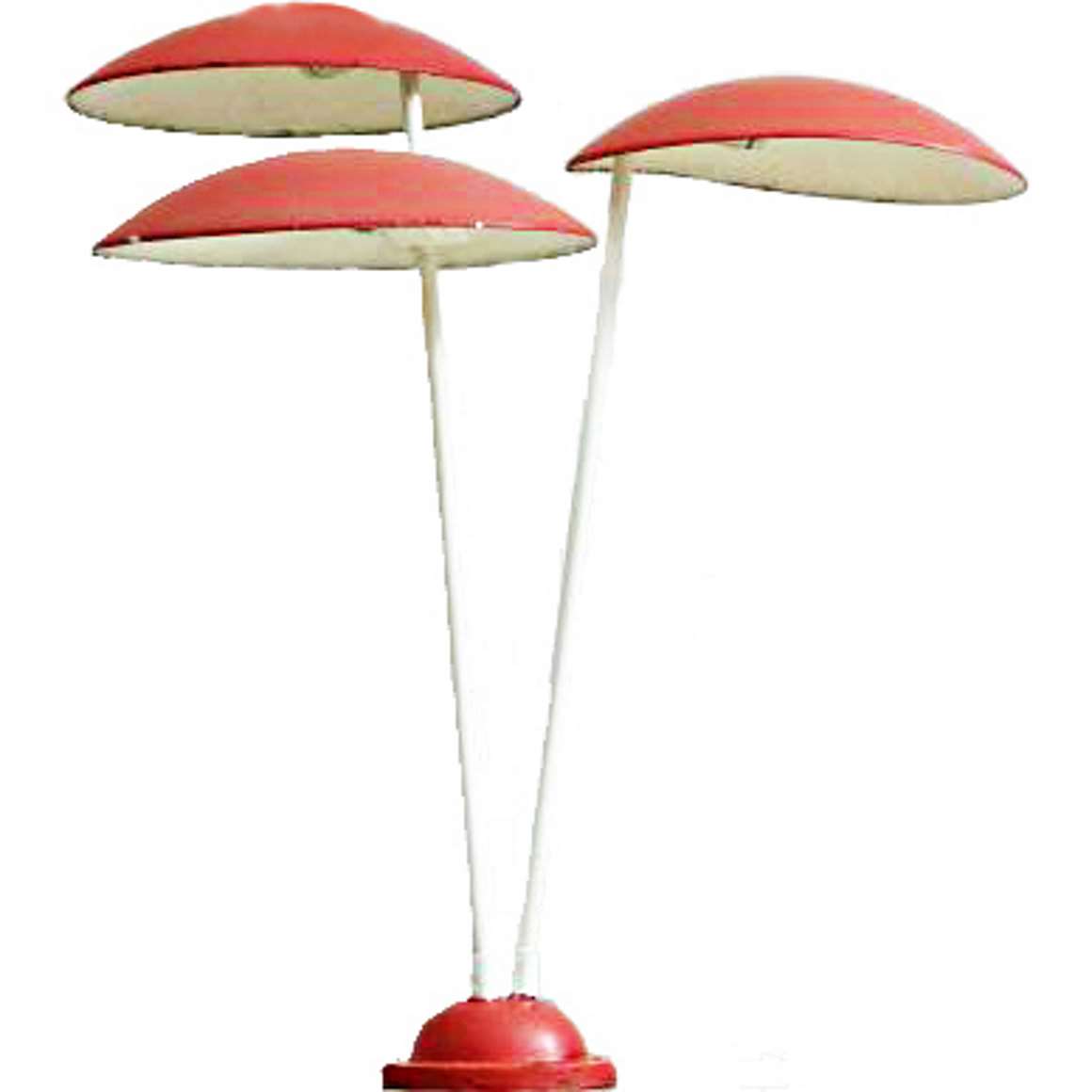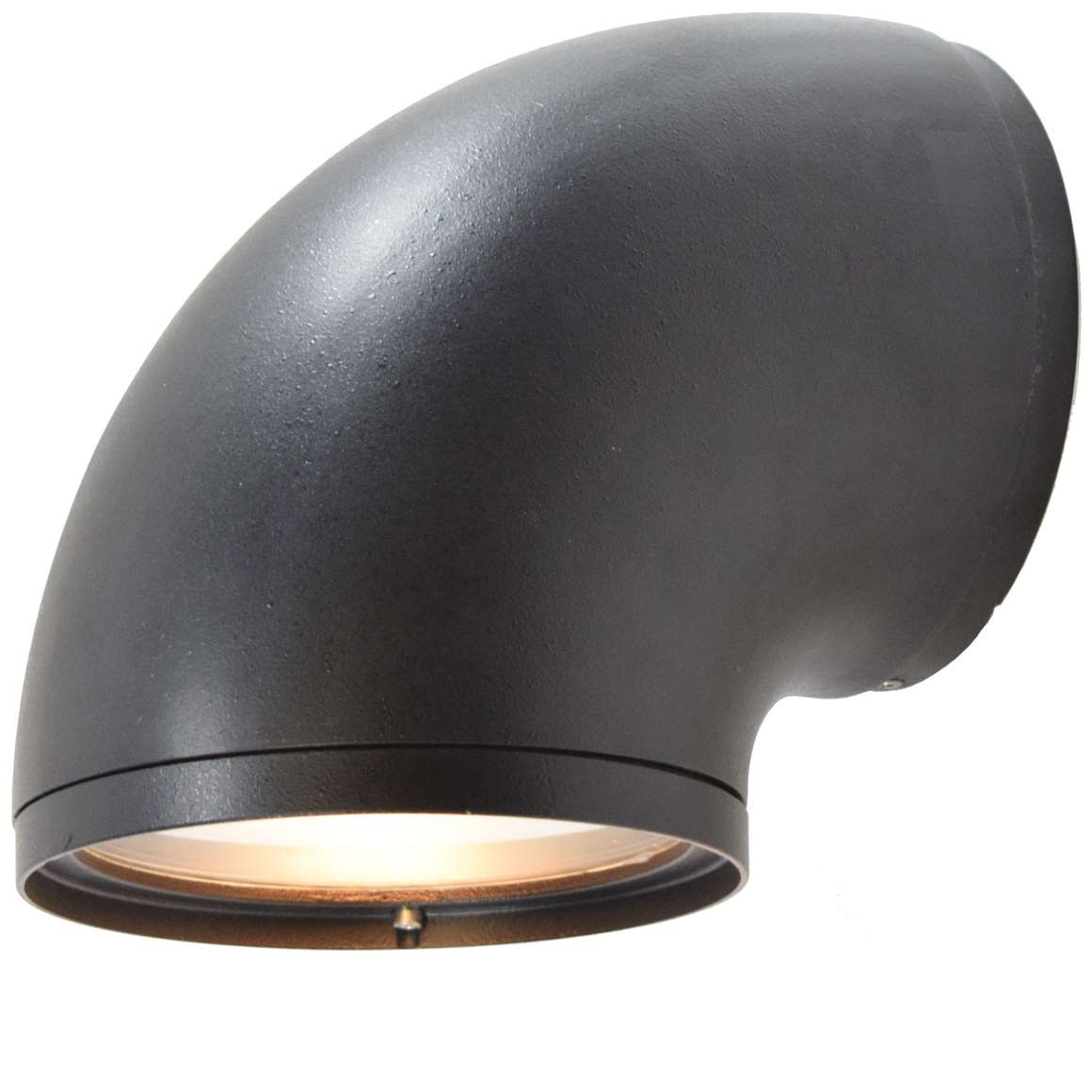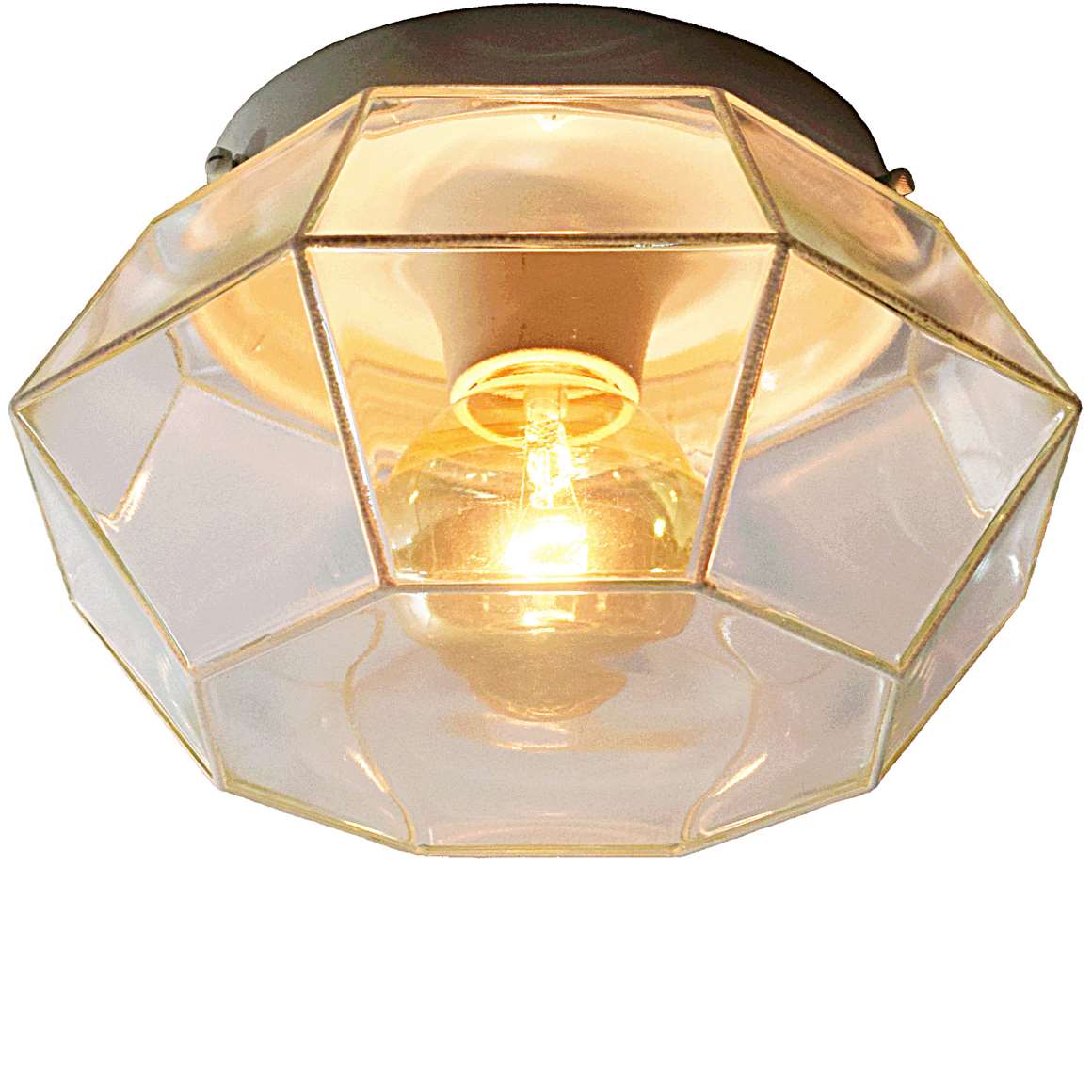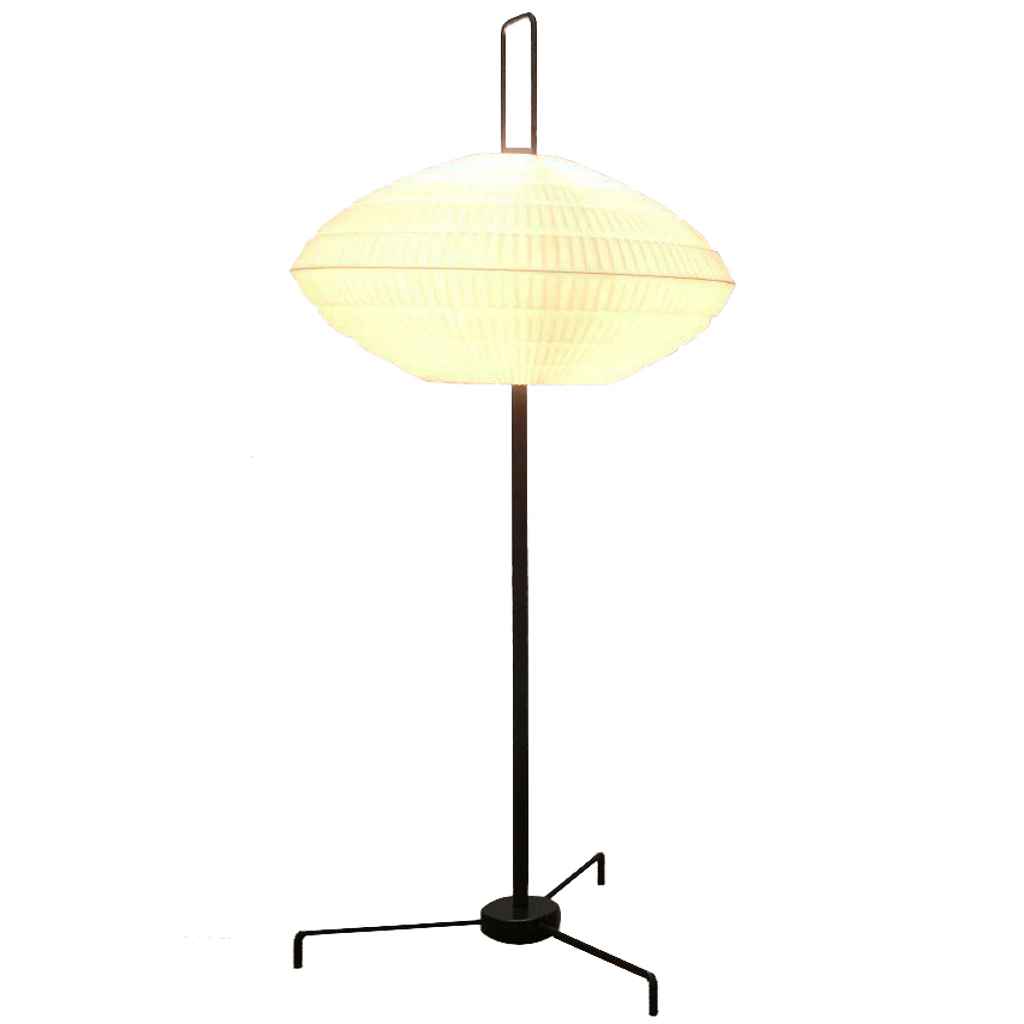Glashütte Limburg bubble glass garden wall lamp – 1979 catalogue picture
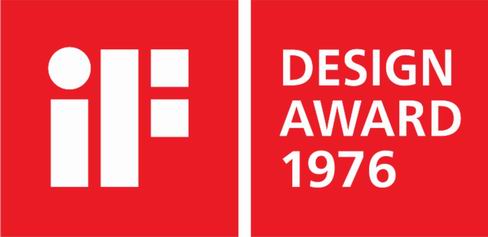
BEGA 5748 Garden – Outdoor Wall Lamp
More or less the same globe wall lamp. It is equipped with another light bulb. A compact fluorescent lamp of 18 watts. Lamps with E27 light bulbs also exists.
White BEGA Garden wall lamp
Version spotted in the entrance hall of an office in Aachen, Germany in 2015
Glashütte Limburg Bubble Glass Garden Wall Lamp
Materials: Black painted aluminium alloy round wall mount with a rectangular tubular rod. Black globe holder. Brass decorative tube. Stainless steel parts. Crystal smoked brown hand blown bubble glass (pulegoso) globe. 3 metal sockets with brass tubular decoration.
Height: 48 cm / 18.89”
Depth: 41 cm / 16.14”
Glass Globe: ∅ 35 cm / 13.77”
Electricity: 3 bulbs E14, 3 x 40 watt maximum, 110/220 volt.
Any type of light bulb can be used. Not a specific one preferred. For this setup 3 frosted tubular bulbs were used.
Period: 1970s, 1980s – Mid-Century Modern.
Designer: To be appraised.
Manufacturers:Glashütte Limburg, Glashüttenweg 1, 65549 Limburg an der Lahn, Germany. BEGA Gantenbrink-Leuchten, Menden, Germany.
Other versions: This Glashütte Limburg bubble glass garden wall lamp exists in several colours and sizes. The biggest version uses 4 E27 light bulbs and the glass globe is ∅ 45 cm / 17.71”. The smallest version has 1 E27 light bulb. A street lamp and a lighting pole garden lamp also exists.
Spare parts can still be ordered for these wall lamps. They can be used inside or outdoors (IP 44 – splash proof). (2018)
Pulegoso: (Italian – the slang term “Pulega” = bubble) Glass with a rough surface, opaque or semi translucent, formed by tiny bubbles obtained with special devices (baking soda, oil,…) typical of the twenties and attributed to Napoleon Martinuzzi.
Glashütte Limburg
Three months after the end of the Second World War in August 1945, graduate engineer Dr Walter Heinrich submitted his first plans for setting up a glass-works to the American military authorities in Limburg an der Lahn in Germany. Approval for building the factory was issued rapidly because the country urgently needed all types of glass. As a result, the ground was broken for Glashütte Limburg as early as 28 September 1945.
Due to the lack of power and the difficulty in obtaining materials during the immediate post-war period, construction was initially slow. However, on 12 May 1947 the glass-works finally held its first topping-out ceremony, and barely 2 months later, on 7 July 1947, Dr Heinrich used the blowpipe to take the first glass smelted in Limburg.
Glasshüttenwerke Limburg GmbH
Initially, the company was called Glasshüttenwerke Limburg GmbH and employed 80 people. The production range covered drinking vessels, mugs and many other types of catering glasses.
Production capacities were increased and Glashütte Limburg became Europe’s largest lighting glass specialist within just a few years, employing almost 1000 people.
The rapid expansion reached its limits at the end of the 1950s. The chairman of the glass-works Supervisory Council, Dr Gottfried Boley, suggested in 1962 that the shares in the company held by the state of Hessen should be privatised.
In the same year, the company succeeded in winning BEGA Gantenbrink-Leuchten OHG, founded in 1945 – which was at that time already one of the largest companies in the German lighting industry – as its ideal partner.
Catalogues
The very first lighting catalogue of Glashütte Limburgappears in 1963.
Six luminaires from the range, presented for the first time in 1964 at the Hanover industrial trade fair, receive awards for excellent design from the Industry Forum. They are included in the special exhibition “gute Industrieform” (good industrial design).
40 years after the first catalogue appeared, the range of lamps from Glashütte Limburg has increased to 1800 different products.
Designers
Many lamps of the company are designed by the Designabteilung Glashütte Limburg (design department) or Atelier Glashütte Limburg. Herbert Proft and Heinz-Josef Ohm designed many awarded lamps.
One of the best known designers is Helena Tynell who created several lamps for the company. Her most famous are the bubble glass lamps series. Helena Tynell (1918 – 2016) was married to the famous designer Paavo Tynell (1890-1973).
Awards
The Glashütte Limburg company received the state prize for “Gute Form 1982 ” (good design 1982) and the “Corporate Design Award 1985”.
Glashütte Limburg received 160 iF Design Awards.
BEGA
The BEGA company was founded in September 1945, at the end of the Second World War. BEGA started as a small business with 5 employees. The company received the “Medaille d’Or ” at the international trade fair in Luxembourg in 1952. In 1958, BEGA constructs the new multi-storey luminaire block with a few other companies at the largest industrial fair in the world in Hanover. An important and courageous step which finally leads to the “World Light Show “.
The complete history of the BEGA company can be found on their website. The company still exists and they make beautiful (industrial) lighting. BEGA received 275 iF Design Awards. You can find them over here on the iF Design website.
The BEGA outdoor wall lamp model 5054 won the iF Design Award in 1976.
Links (all external links open in a new window)
If Design Awards for Glashütte Limburg
Limburg an der Lahn – Wikipedia
Helena Tynell – Wikipedia (only in Suomi (2017))
Glashütte Limburg manufactures exclusive interior luminaires with natural gas
Vintageinfo
Opal glass mushroom table lamp
Helena Tynell bubble glass wall lamp
